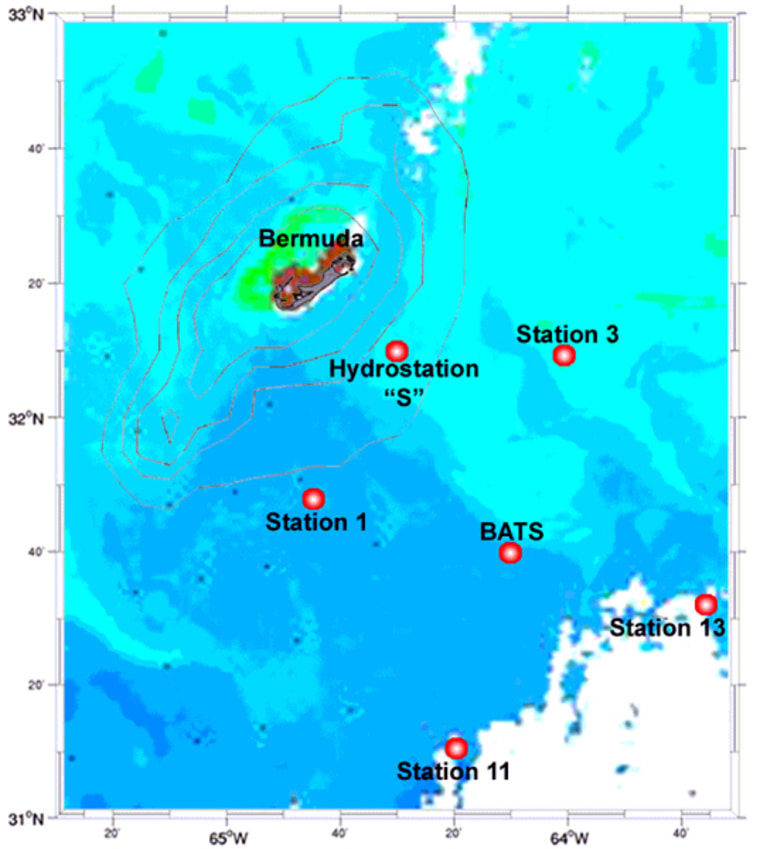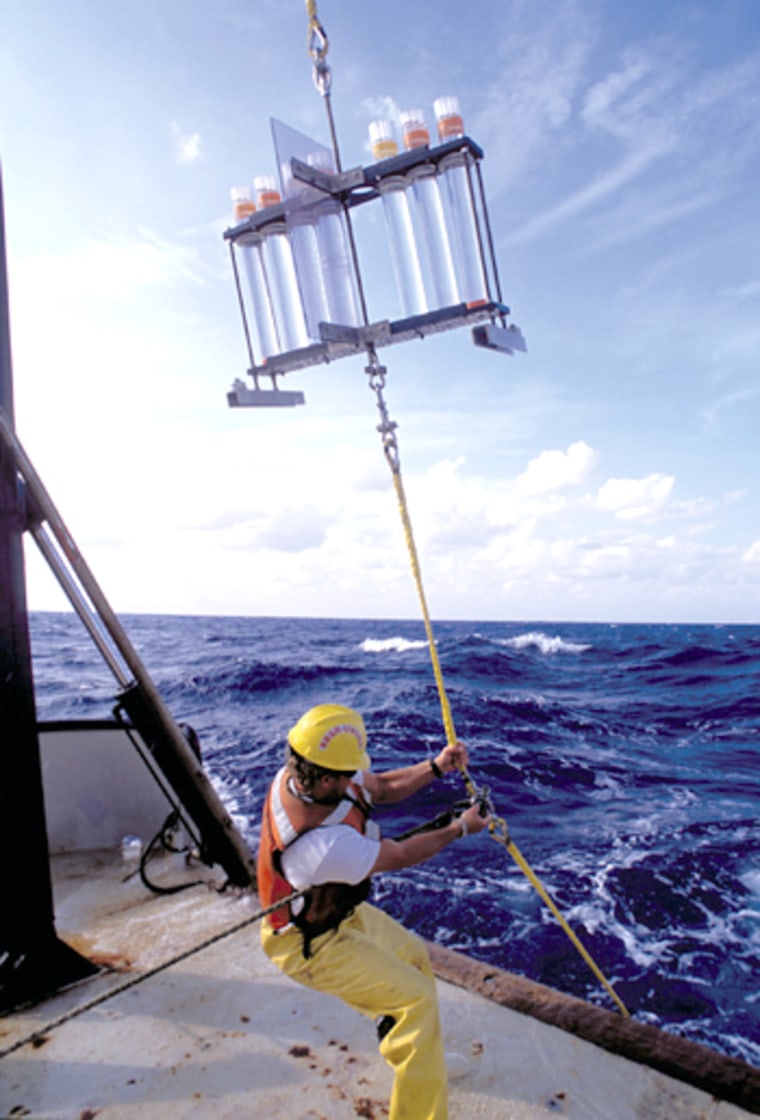Genome experts who took on a patch of ocean for a mass gene-sequencing project said Thursday they had discovered at least 1,800 new species of microbes and changed some of their fundamental ideas about ocean biology.
Genome pioneer Craig Venter and other scientists analyzed the tiny organisms in a sample of water from the Sargasso Sea off Bermuda, and then sequenced the genetic code.
They used the technique that Venter, now at his own nonprofit institute, used to accelerate the sequencing of the human gene map. Called whole-genome shotgun sequencing, it uses powerful computers to reassemble the genetic code.
They found 1.2 million new genes and, based on what they know about the genetics of existing organisms and the sample they took, guess that represents at least 1,800 new species.
'Vast legions of unseen organisms'
“By taking relatively small samples of water or soil and using the tools and techniques of shotgun sequence analysis, we are able to identify and characterize the vast legions of unseen organisms living in the environment,” Venter, head of the Maryland-based Institute for Biological Energy Alternatives, said in a statement.

“It is estimated that over 99 percent of species remain to be discovered. Our work in the Sargasso Sea, an area thought to have low diversity of species, has shown that there is much that we do not yet understand about the ocean and its inhabitants.”
Most surprising, they said, was the discovery of 800 new genes for photoreceptors — structures used by creatures to collect light. To date, only about 150 photoreceptor genes have been found in all the known species.
This suggests microbes in the area they analyzed use sunlight in unique ways, Venter said.
“Perhaps sunlight plays a far more important role in Earth’s biology, in Earth’s ecosystems, than any of us previously imagined,” Venter told a news conference.
New energy sources
Raymond Orbach of the Department of Energy, which helped fund the study, said this could lead to new energy sources.
“We have been looking for new photoreceptors that can be of value in harvesting light to make hydrogen using bacteria,” he told the news conference.
The Sargasso Sea, bounded in part by the nutrient-rich Gulf Stream, is desertlike in its supply of nutrients, the researchers write in Friday’s issue of the journal Science.
Venter said perhaps the wealth of photoreceptors evolved to microbes could harvest sunlight instead of using nutrients.
New cleanup techniques
Orbach said the study could also help find new bacteria to use in bioremediation, the use of microbes to clean up hazardous chemicals or radiation.
“We have a very serious responsibility for the cleanup of many sites in the (Department of Energy) complex,” Orbach said. ”This expedition and its results have given us new tools.”
Venter and colleagues at the The Institute for Genomic Research, the University of Southern California and the Bermuda Biological Station for Research worked together as part of a larger expedition using a sailboat called the Sorcerer II.
The plan is to sail it around the world analyzing sea samples, if they can get the funding.
